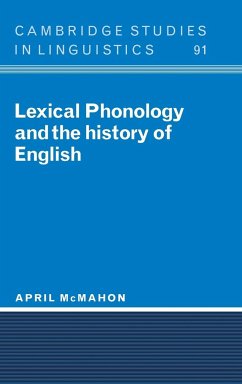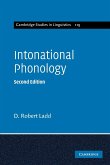This book has two main goals: the re-establishment of a rule-based phonology as a viable alternative to current non-derivational models, and the rehabilitation of historical evidence as a focus of phonological theory. Although lexical phonology includes several constraints, such as the Derived Environment Condition and Structure Preservation, intended to reduce abstractness, previous versions have not typically exploited these fully. The model of lexical phonology presented here imposes the Derived Environment Condition strictly; introduces a new constraint on the shape of underlying representations; excludes underspecification; and suggests an integration of lexical phonology with articulatory phonology. Together, these innovations ensure a substantially more concrete phonology. The constrained model is tested against a number of well-known processes of English, Scottish and American accents, including the Vowel Shift Rule, the Scottish Vowel Length Rule, and [r]-insertion, and draws interesting distinctions between what is derivable by rule and what is not.
Table of contents:
Acknowledgements; 1. The role of history; 2. Constraining the model: current controversies in lexical phonology; 3. Applying the constraints: the modern English vowel shift rule; 4. Synchrony, diachrony and lexical phonology: the Scottish vowel length rule; 5. Dialect differentiation in lexical phonology: the unwelcome effects of underspecification; 6. English/r/; Bibliography.
This book analyses some differences between English, Scottish and American accents of English, shows how they developed and why they have their current form. Although the revised version of lexical phonology presented here is intended to describe present-day patterns, it shows how historical sound changes gave rise to these patterns.
An analysis of the development of and differences between English, Scottish and American accents in English.
Hinweis: Dieser Artikel kann nur an eine deutsche Lieferadresse ausgeliefert werden.
Table of contents:
Acknowledgements; 1. The role of history; 2. Constraining the model: current controversies in lexical phonology; 3. Applying the constraints: the modern English vowel shift rule; 4. Synchrony, diachrony and lexical phonology: the Scottish vowel length rule; 5. Dialect differentiation in lexical phonology: the unwelcome effects of underspecification; 6. English/r/; Bibliography.
This book analyses some differences between English, Scottish and American accents of English, shows how they developed and why they have their current form. Although the revised version of lexical phonology presented here is intended to describe present-day patterns, it shows how historical sound changes gave rise to these patterns.
An analysis of the development of and differences between English, Scottish and American accents in English.
Hinweis: Dieser Artikel kann nur an eine deutsche Lieferadresse ausgeliefert werden.








